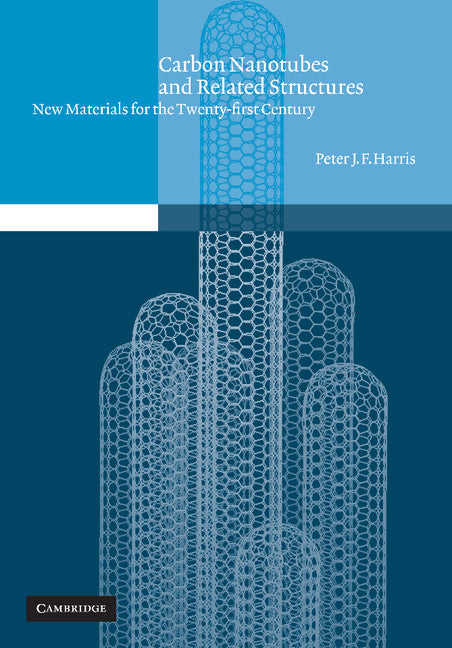Freshly Printed - allow 8 days lead
Couldn't load pickup availability
Carbon Nanotubes and Related Structures
New Materials for the Twenty-first Century
This is a 1999 book on carbon nanotubes, one of the most exciting areas in materials chemistry.
Peter J. F. Harris (Author)
9780521005333, Cambridge University Press
Paperback, published 18 October 2001
294 pages, 167 b/w illus. 1 table
24.7 x 17.4 x 1.5 cm, 0.599 kg
'In a clear and straightforward style, Harris carefully chronicles the discovery of carbon nanotubes and related structures, and documents the development of carbon nanoscience and nanotechnology. The current developments of the field are tied to their historical roots in such a surprising way that it makes Carbon Nanotubes and Related Structures both a pleasure to reead and a specialized scientific book. … The book offers a good introduction to the science and technology of carbon nanotubes and related structures in a very readable manner, all topics being well introduced and carefully considered.' A European Journal of Chemical Physics and Physical Chemistry
This 1999 book covers all the most important areas of nanotube research, as well as discussing related structures such as carbon nanoparticles and 'inorganic fullerenes'. Carbon nanotubes are molecular-scale carbon fibres with structures related to those of the fullerenes. Since their discovery in 1991, they have captured the imagination of physicists, chemists and materials scientists alike. Physicists have been attracted to them because of their extraordinary electronic properties, chemists because of their potential as 'nano-test-tubes', and materials scientists because of their amazing stiffness, strength and resilience. On a more speculative level, nanotechnologists have considered possible nanotube-based gears and bearings. This was the first single-author book on carbon nanotubes. It will be of interest to chemists, physicists, materials scientists and engineers working on carbon materials and fullerenes from both an academic and industrial background.
1. Introduction
2. Synthesis
3. Structure
4. The physics of nanotubes
5. Nano-capsules and nano-test-tubes
6. The ultimate carbon fibre?
7. Curved crystals, inorganic fullerenes and nanorods
8. Carbon onions and spheroidal carbon
9. Future directions
Index.
Subject Areas: Inorganic chemistry [PNK], Chemistry [PN], Condensed matter physics [liquid state & solid state physics PHFC]


